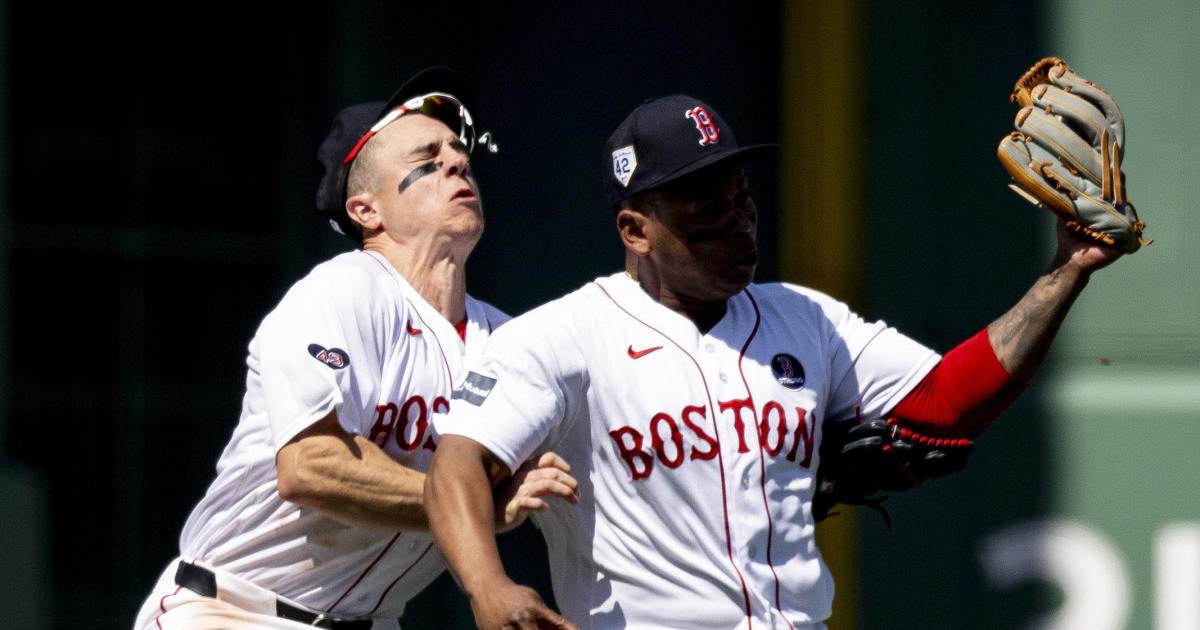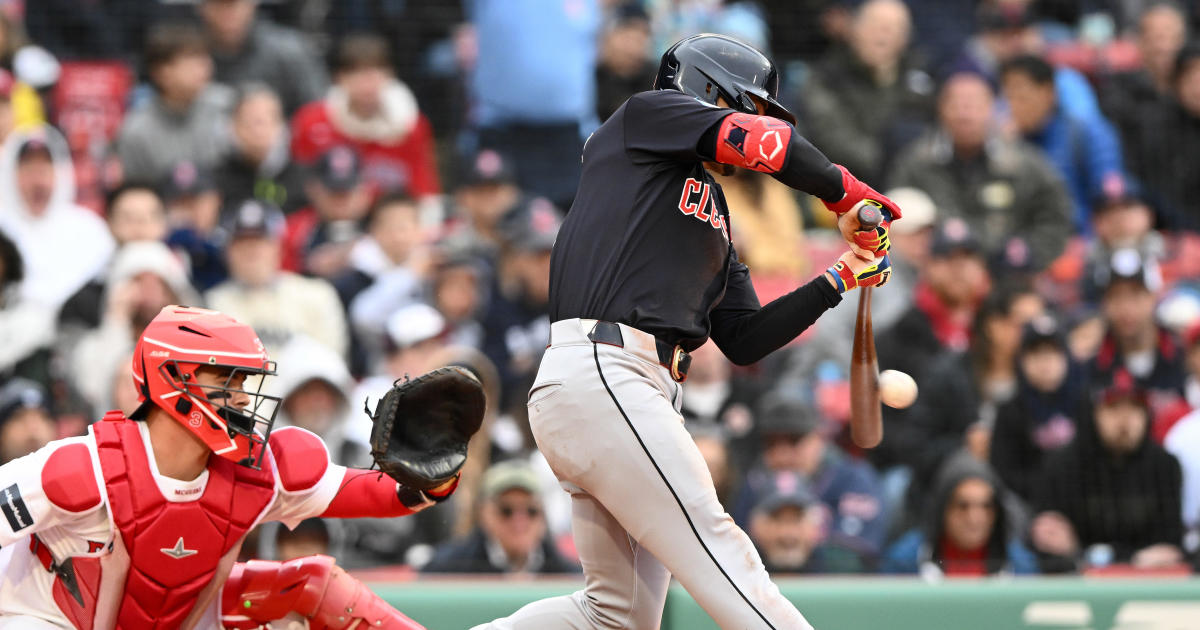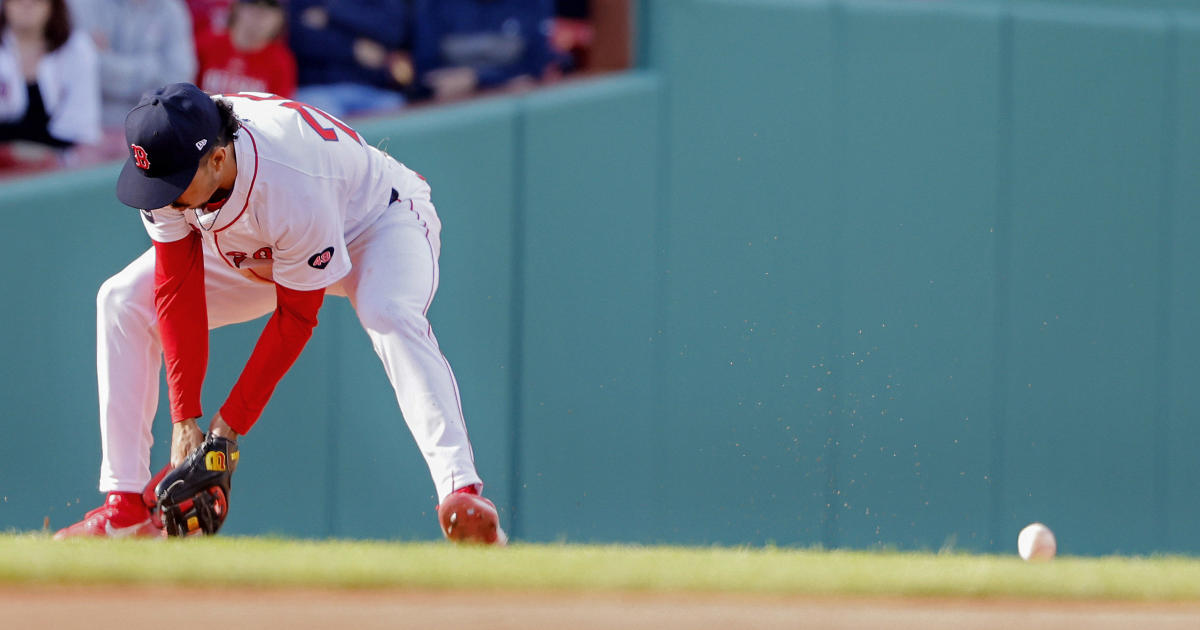Hurley: Red Sox Couldn't Have Bungled Chris Sale Situation Any Worse If They Had Tried
By Michael Hurley, CBS Boston
BOSTON (CBS) -- Chris Sale showed up late to spring training due to illness, threw in a very limited capacity, felt elbow pain and underwent an MRI. The feeling around the veteran left-hander is ominous.
And nobody is really surprised.
While Tuesday's news certainly seemed grim, it was merely the latest confirmation that the Red Sox as an organization have completely bungled just about everything regarding their ace over the past 12 months.
Of course, it must be said that it is very easy to fall in love (sports love, that is) with Chris Sale. He is everything you'd want in an athlete. He is the ultimate competitor. He is immensely talented. Spend five minutes listening to him explain his philosophy, and you're sold.
Long story short, there's a lot to like about Chris Sale. But that's not what this is about.
This is about an organization that acquired Sale, rightly believing that David Price could not be the leader in the rotation of a championship squad. For that effort, they were rewarded with a World Series trophy in 2018. (Somewhat ironically, Price was more instrumental in that World Series victory than Sale was. That's neither here nor there, though.)
What happened after that, however, is a textbook case of mismanagement. How much of that falls on Dave Dombrowski's shoulders, and how much of it is the fault of either ownership or the remaining members of the front office remains impossible to determine. Regardless, the 2020 Red Sox are stuck with the problem.
The timeline dating back to late in the 2018 season provides a rather stark picture.
MIDSUMMER, 2018
Sale started the 2018 season on fire, and just one year after finishing as the Cy Young runner-up, he was setting himself to win the award for the first time of his career.
After his six shutout innings on July 27, Sale owned an 11-4 record and a 2.04 ERA. He had recorded 207 strikeouts (and only 33 walks) in 141 innings, and opponents were hitting just .179 against him. He was rolling
But on July 31, he was placed on the DL with shoulder inflammation. He returned to pitch five shutout innings in a win at Baltimore on Aug. 12, but he then landed back on the DL. He'd return in September to make four "starts," though he average just three innings per outing.
He had an unimpressive start (two runs in 5.1 innings) and a scoreless inning of relief against the Yankees in the ALDS, before giving up two runs in just four innings of work in his start against the Astros in the ALCS. He allowed three runs and lasted just four innings in his lone World Series start, before coming out of the bullpen to close out the clinching Game 5.
That late-season decline continued what had been a career-long trend for Sale.
CHRIS SALE, ERA BY MONTH, CAREER
April: 3.22
May: 2.69
June: 2.56
July: 2.78
August: 3.31
September/October: 3.78
His contributions in the postseason were notable, but clearly, the pitcher who annually got worse in August and September throughout his career had done nothing to quell that notion.
2019 SPRING TRAINING
When meeting with reporters in Fort Myers, Red Sox owner John Henry admitted that he was still haunted by the team's mishandling of Jon Lester in 2014.
"I think we blew the Jon Lester [situation]," Henry lamented. "We blew re-signing him in spring training [2014]."
Seemingly determined to not make the same mistake twice, the Red Sox opened the vaults for Sale a month later. The team signed Sale to a five-year, $145 million contract that would pay Sale an average of $29 million per year through 2024, with an option year for 2025.
Considering Sale was coming off a season where he physically broke down at the age of 29, the deal carried some inherent risk. Yet the Red Sox, fully equipped with all of his medical information, went all in on Sale.
2019 REGULAR SEASON
Opening Day was rough for Sale. He got pounded for seven runs over just three innings in Seattle. Two starts later, he surrendered five runs in four innings against Toronto. He followed that up by allowing four runs over just five innings in New York. By the end of April, he was 0-5 with a 6.30 ERA. The Red Sox were 0-6 when he started.
He recovered, though, like a true professional. He posted a 1.99 ERA across his next eight starts, going just 2-2 but striking out 88 batters (with 10 walks) across 54.1 innings.
For all intents and purposes, Sale was back. The return, however, was short-lived.
From June 26 through August 13, Sale posted a 5.88 ERA, going 3-4 and struggling to find consistency. He was tagged for eight runs in 3.2 innings on Aug. 3 against the Yankees, before pitching ight shutout innings (with 13 strikeouts) against the Angels. Then he went out and allowed five runs (three earned) in 6.2 innings at Cleveland.
And then he was done.
Elbow inflammation sent Sale to the Injured List. That was, most certainly, bad news. But Sale went and visited Dr. James Andrews, and he became the rare athlete to depart the Florida offices with good news: He didn't need Tommy John surgery.
AUGUST 2019
This is how the Red Sox explained Sale's situation in August:
"Dr. Andrews confirmed that Sale has inflammation in his left elbow and treated it with a platelet-rich plasma injection. Dr. Andrews also recommended a period of shutdown from throwing. Sale will be re-evaluated in six weeks by Dr. Andrews."
Sale said at the time, "Obviously it's not great news. About as good as we could get. So, we rest, and in 4-6 weeks, get on a throwing program and get back to it."
Sale was asked if he was worried about his situation.
"No, not at all," Sale replied. "Not as we stand here now."
NOVEMBER/DECEMBER 2019
Sale visited Dr. Andrews for an evaluation to see how Sale's elbow responded to the platelet-rich plasma injection. The prognosis was good.
"The results were positive with the starter getting the go-ahead to immediately start throwing with an eye on participating in spring training," Rob Bradford reported on Dec. 1.
It appeared the Red Sox and Sale had somehow dodged a bullet. Alas, they did not.
SPRING TRAINING 2020
Sale was late to arrive in spring training due to a bout with pneumonia. Outside of that ailment, though, he said he felt good and ready to go.
"When we were in that meeting, I said the only thing this hurts is my ego," Sale said regarding the team's decision to start him on the IL this season.
"His arm feels great," interim manager Ron Roenicke beamed.
All was good, right up until it wasn't.
Now the baseball world awaits the results of that MRI, but based on the tenor of Tuesday's dealings, waiting for positive news would seemingly be a fruitless endeavor.
Naturally, the situation is going to lead to quite a bit of second-guessing in two key areas.
First, why did the Red Sox rush to guarantee $145 million to Sale just months after his throwing arm broke down as he approached his 30th birthday?
Secondly, with a clearly damaged elbow in the summer of 2019, and with what looks like a road to surgery ahead, why didn't the team opt for the surgery last year to accelerate the recovery process?
The second part is admittedly a bit overboard, considering Andrews did not recommend surgery at the time. And considering the follow-up visit led to Andrews clearing Sale to begin a throwing problem in December, one might rightly assume that the recovery went as planned. (It's still technically a possibility that Sale could somehow avoid surgery once again, but that would require an unsustainable level of optimism. And even if he does avoid surgery, his start to 2020 will be further delayed, and his effectiveness will remain in question.)
Really, it's all about that first question. A slender pitcher who throws gas and clearly puts tremendous amount of torque on his arm who has also gotten worse in August and September throughout his career just finished a season where he fell apart in August and September. He limped through the postseason, getting by on guts and guile more than anything else.
That's seemingly not the right time to offer a five-year, $145 million to the pitcher.
While the Red Sox would have run the risk of losing Sale to a massive free-agent contract at the end of 2019, the risk was seemingly far greater to commit so heavily to a pitcher with arm troubles at the age of 30 -- especially for a team that suddenly had to worry a great deal about its finances. The fact that Henry outright admitted his regret about failing to re-sign Lester just a month before inking Sale to an extension lends to the idea that the Sale contract was not the soundest decision ever made.
And now, the team that had to get under the competitive balance tax might be paying $30 million for zero innings of Sale in 2020, while also paying $16 million for David Price to pitch for the Dodgers. And that's all one year after $17 million only got the Red Sox 67.2 innings out of the oft-injured Nathan Eovaldi.
Suffice it to say, the Red Sox have been particularly shrewd with their spending on starting pitching, and there's every reason in the world to wonder why the team felt the need to sign Sale to a long-term contract one year ago.
You can email Michael Hurley or find him on Twitter @michaelFhurley.



